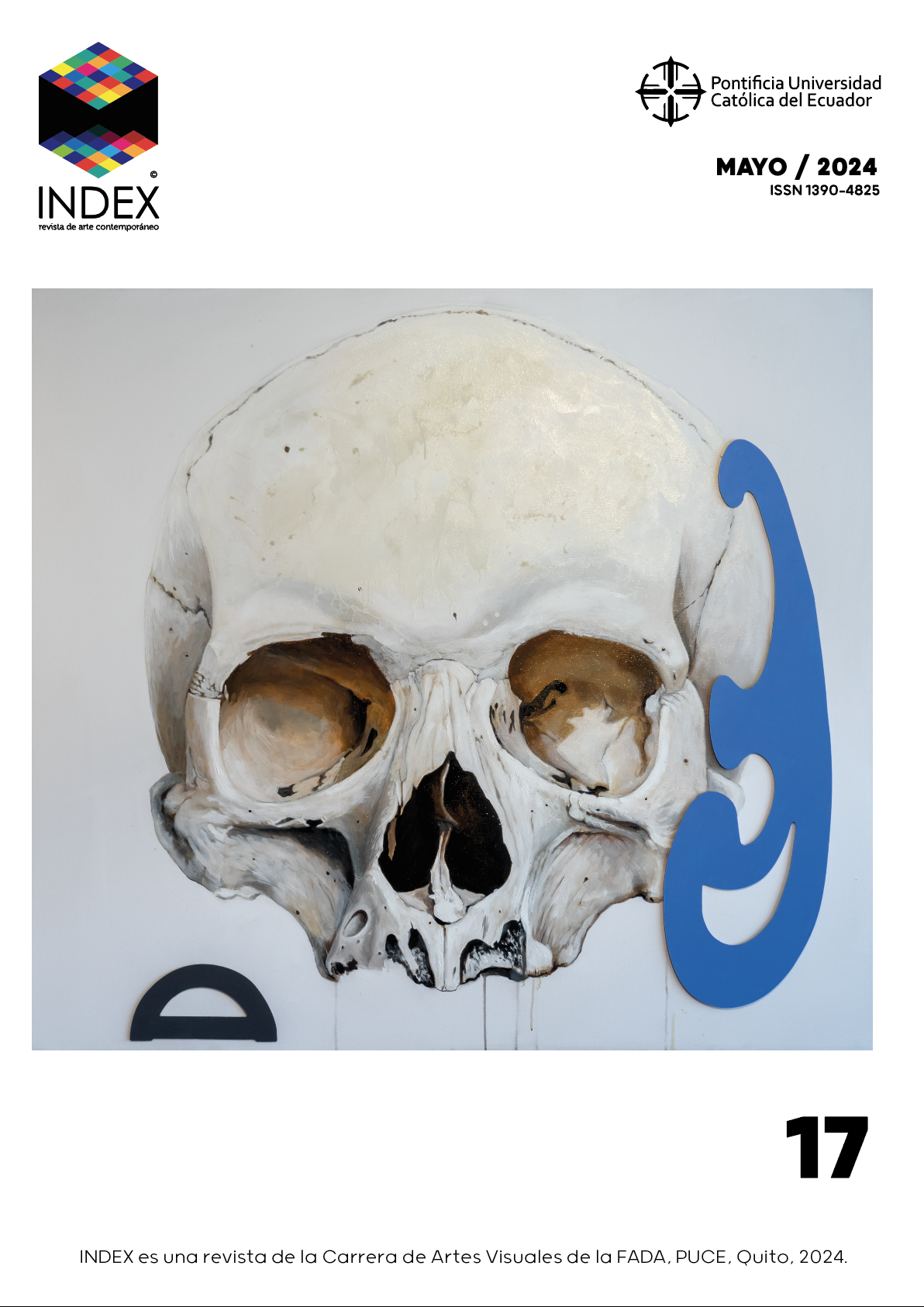She/Her The Second Mirror Stage Interdisciplinary methodology to create a workshop of Artistic Creation - Education to work about children identity
Main Article Content
Abstract
This article presents and analyzes the fundamental theoretical foundations of an interdisciplinary methodology called "The Second Mirror Stage", which combines Artistic Creation Education with electronics in a workshop aimed at children aged 8 to 12. The main purpose of this methodology is to foster the development of an early awareness of the psychological "Self," which is rooted in perceptions of cultural and social context. To achieve this goal, the article undertakes a critical analysis of artistic pedagogies and scientific theories on the brain and psychology that complement and support the successful implementation of the proposed methodology.
Downloads
Article Details

This work is licensed under a Creative Commons Attribution-NonCommercial 4.0 International License.
Index, revista de arte contemporáneo maneja sus derechos bajo licencia Creative Commons Reconocimiento-NoComercial 4.0. En ese sentido los envíos quedan sujetos a la decisión del autor.
References
Abad, J. (2008). El placer y el displacer en el juego espontáneo infantil. Revista Arteterapia. Papeles de Arteterapia y Educación Artística para la inclusión social, 3,167-188.
Acaso M. (2005). El curriculum oculto visual: aprender a obedecer a través de la imagen.
Acaso, M. y Megías, C. (2017). Art Thinking. Cómo el arte puede transformar la educación. Espasa Libros.
Alonso, J. (2018). La individuación desde el enfoque de Carl G. Jung. Revista de Psicología Universidad de Antioquia, 10 (1), 325-343. DOI: 10.17533/udea.rp. v10n1a13
Cotrufo, T. (2016). En la mente del niño. Bonatella Al compás, S.L.
del Carmen Gonzáles, M. (2011). El arte en las escuelas no es juego de niños. ERRATA, 20–42.
Haraway, D. (1991). Manifiesto Cyborg. The Reinvention of Nature , 149–181.
Hernández-Mella, R., Gómez-Mena, J., & Santos-Batista, Y. (2020). Psique e individuación: pérdida y recuperación del sentido de la vida. Ciencia y Sociedad, 45(4), 33-47. Doi: https://doi.org/10.22206/cys.2020.v45i4.pp33-47
Gómez-Pintado. A.; Martínez-Abajo, J.; López-Vélez, A. L. (2022). Arte, indiv. soc. 34(4), 2022: 1579-1601
González-Victoria, L. M. (2011). Arte de acción: resignificación del cuerpo y del espacio
urbano. Revista Nodo, 10 (5), 55-72.
Jung, C. G. (1959). The Undiscovered Self. New Armer Library.
Lacan, J. (1971). Escritos I. Siglo veintiuno editores, s.a de cv.
La travesía. (2021, 26 de octubre). Lacan - Introducción Básica: Estadio del Espejo, Imaginario, Simbólico y Real, gran A, petit a, … . Youtube. https://www.youtube.com/watch?v=ep3iV7cfXtw
Punset, E. (2010). El alma está en el cerebro. Ediciones Generales, S.L.
"Software". Autor: Equipo editorial, Etecé. De: Argentina. Para: Concepto.de. Disponible en: https://concepto.de/software/. Última edición: 13 de junio de 2022. Consultado: 07 de noviembre de 2022 Fuente: https://concepto.de/software/#ixzz7jyxJ6Shw
Sosa, G. (2023). Vestigios del Ser: Taller de Educación – Creación Artística para niñxs en el Centro Comunitario Guayama San Pedro. Pontificia Universidad Católica del Ecuador.
Wiener, N. (1948). Cibernética y la sociedad. Editorial Sudamericana.

